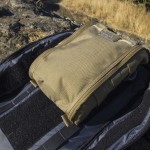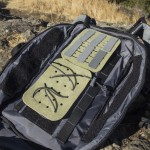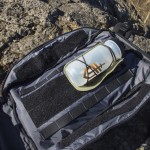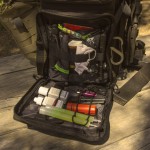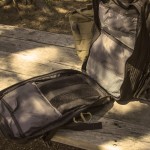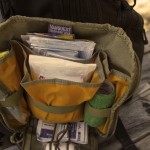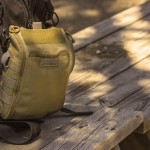I’m a big fan of fixed blade knives. I carry one hiking (a Gerber Prodigy in case you’re wondering) and it’s an essential part of my SAR mission kit. They’re handy for anything from prying to cutting rope and webbing. They also serve well for survival tasks such as shelter building and fire making.
There are situations however when a larger blade is called for. While utility knives with blades from three to six inches can accomplish these chores, larger and heavier blades can perform them more efficiently and for longer periods of time. They are also needed for winter survival situations where more wood is needed for larger fires and more durable, insulated shelters. Large survival knives and axes are often the tools of choice for such tasks.
But which one do you use?
Axes
Axes are tried and true outdoor tools. As the years go by, designs have been improved and revamped for bushcrafting and tactical applications. Different companies and designers will offer radically different options. Some hatchets and tomahawks will be for outdoor and survival use while others tailored for prying, breaching and combat.
Axes offer some distinct advantages. They are heavy and the mass behind the blade allows for good chopping to make kindling. Choking up on the head gives better control for finer tasks such as tinder preparation. Some hatchets will have secondary blades behind the primary edge specifically for detailed work.
There are downsides to consider. The head-heavy nature of axes requires care as they can be difficult to control when chopping. Safe use requires proper stance as well as placement of whatever the user is cutting. Another disadvantage is the cumbersome nature of the tool. While finer tasks can be done for fire making and shelter building, food preparation and other detailed work may require a small knife to achieve even for experienced users.
Large Survival Knives
I define a large survival knife as a knife with a blade that is between eight inches and twelve inches long and 3/16 of an inch thick or greater. These knives are shorter, but thicker and than most machetes and usually have a harder steel.
Large survival knives can accomplish a large variety of tasks from shelter building to food preparation when properly handled. They can chop wood as well as split kindling using a batoning technique. Some knives are made with finger choils that allow the hand to be placed forward closer to the blade for fine tasks.
Some also allow the user to easily lash the knife make a spear if the situation calls for it. Knives also tend to be lighter than hatchets and tomahawks.
There are some disadvantages to the large knives. Safety is an obvious issue when it comes to chopping and tasks where your body is close to the blade. Another common issue is quality and construction. Ergonomics are incredibly important in the handle and some manufacturers create handle shapes that create quick fatigue in the hand during use.
Which big blade to put in your outdoors or survival kit is up to you. Be sure to choose a good manufacturer and that the steel and sheath are both strong. Also consider your current set of skills and how well you will be able to use the tool to accomplish your tasks in a stressful environment.

